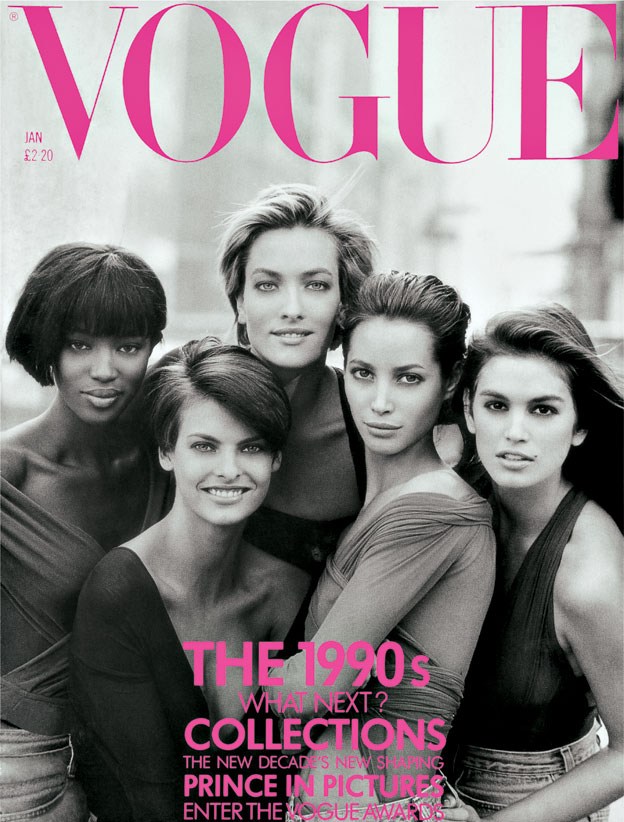George Michael – “Freedom ’90”
- 15 May 2015
- The artist being absent is bold and the supermodels lip-syncing in his place is clever. The style of its now-famous Hollywood director and the message of its then-closeted gay superstar add to the aura of this video.
A couple of weeks ago, I visited the Apple web site when I noticed the promo for the (since-delayed) Apple Watch featuring Christy Turlington Burns. The supermodel-turned-activist still looks good, and later I realize that she’s in her mid-forties. Then I think of her appearing in George Michael’s “Freedom ’90,” which gives me a chance to pay homage to the iconic video.
Behind the Scenes, Sort of
The story, as I imagine it, goes thusly: one day, twenty-five years ago, George Michael sees a cover of Vogue with Christy and fellow supermodels Naomi Campbell, Cindy Crawford, Linda Evangelista, and Tatjana Patiz. The fame-weary Michael gets the idea to have these women appear in his place in the video for his upcoming single.
Michael convinces all of them to go along with his idea and, just as importantly, he convinces his record label to pay for the idea, because Evangelista has infamously said, “We don’t wake up for less than $10,000 a day” (Harper’s Bazaar). David Fincher signs on to direct; he’s already directed the video for Madonna’s “Vogue” earlier in the year, so he’s no stranger to ambitious video concepts involving pop superstars.

Somebody (possibly Michael) makes the decision to include male models. Wikipedia says they’re Peter Formby, John Pearson, Todo Segalla, and Mario Sorrenti. Somebody (probably Michael) makes another, more impactful decision: the models will lip-sync the lyrics. This idea is pure genius because, ironically, a viewer is more likely to pay attention to the lyrics than if the artist is performing them, maybe due to the so-called Halo Effect.
Faith vs Fincher
Besides beautiful people with flawless bone structure, the video has other stimulating imagery; it has fire and explosions, too. The objects being set aflame and blown up have symbolic meaning, of course. The leather jacket, vinyl jukebox, and acoustic guitar are obvious visual references to “Faith,” which had helped launch Michael to the superstardom that he shuns in the “Freedom ’90” video.
Fincher mimics the beginning of the “Faith” video by showing the inner workings of a stereo, instead of a jukebox, but he puts his unique touch on this video, too. It has the same dark and decrepit setting that later features in Seven (1995) and Fight Club (1995). Christy gets the best shots, especially the one in which she peers through the shadows. My favorite part, though, is the montage of the models lip-synching the line, “That’s what you get.”
The Song
The video wouldn’t be as memorable if the song weren’t good. I’m not a hardcore fan of George Michael, but the music is catchy. The drums and piano are more prominent than they are in most pop songs, and the variety of vocal tracks is likely intended to convey Michael listening to multiple voices in his head. The choir backing in the chorus gives it a Southern gospel sound, which suits the theme of emancipation.
The lyrics are even more poignant in hindsight. They’re words from a disenchanted pop superstar and closeted gay man who would’ve been deeply unsatisfied with his professional and personal situation. Several years later, after leaving Sony, he visually dissed his former label in the video for “Fastlove,” and he didn’t publicly acknowledge his sexual orientation until his restroom scandal, though he did exploit it with the video for “Outside.”
Like “1984“, “Freedom ’90” is a landmark video. It can’t be replicated mainly because it comes from a state of the world that’s long passed. Specifically, supermodels are no longer household names and popular entertainers can be openly gay. Still, I enjoy the video.